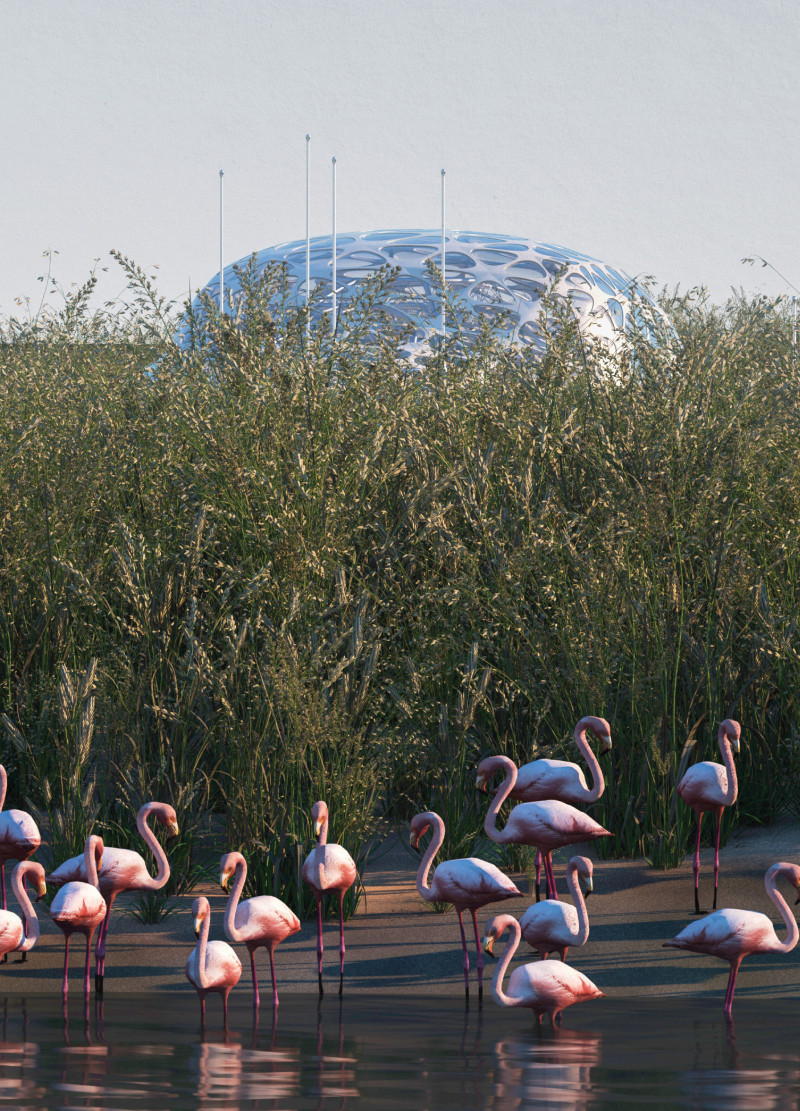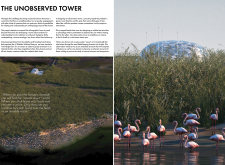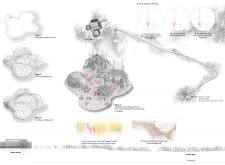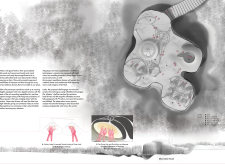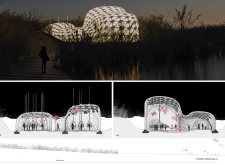5 key facts about this project
The project located in the Al Wathba Wetland Reserve aims to create a thoughtful interaction between humans and the wildlife, especially flamingos. The observation tower serves as a focal point, designed to allow visitors to experience the ecosystem without causing disturbance. The concept prioritizes integration into the natural environment, promoting exploration while respecting the existing ecological dynamics.
Design Approach
The observation tower features a semi-sunken form that blends into the landscape of the wetland. This design reduces visibility and minimizes potential disruptions to wildlife behavior. By placing the structure in a way that conceals human presence, the design promotes a more respectful relationship between visitors and the natural world.
Accessibility and Interaction
Visitors reach the tower via a winding boardwalk that gracefully moves through the reed fields. This pathway enhances the experience by providing a way to explore the wetlands while remaining hidden from view. The thoughtful integration of the boardwalk with the surrounding landscape emphasizes a commitment to preserving the natural habitat and maintaining the ecological balance during human activities.
Technological Integration
The design incorporates modern observation technologies to promote non-intrusive engagement with wildlife. Ultra-slim periscopes equipped with nano-digital cameras allow for detailed visual observations. Additionally, nano-sized drones capture aerial footage of the flamingos in their natural habitat. These features enhance the educational opportunities available at the site, all while ensuring that wildlife is not disturbed.
Sustainable Considerations
To align with contemporary architectural practices, photovoltaic cells are integrated into the inflatable structure. This choice highlights the importance of sustainability and energy efficiency, reflecting a growing effort to harmonize built environments with nature.
In essence, the design creates a careful arrangement that reflects a commitment to the wildlife, providing an educational resource that fosters a deeper understanding of the unique ecosystem within the Al Wathba Wetland Reserve.


